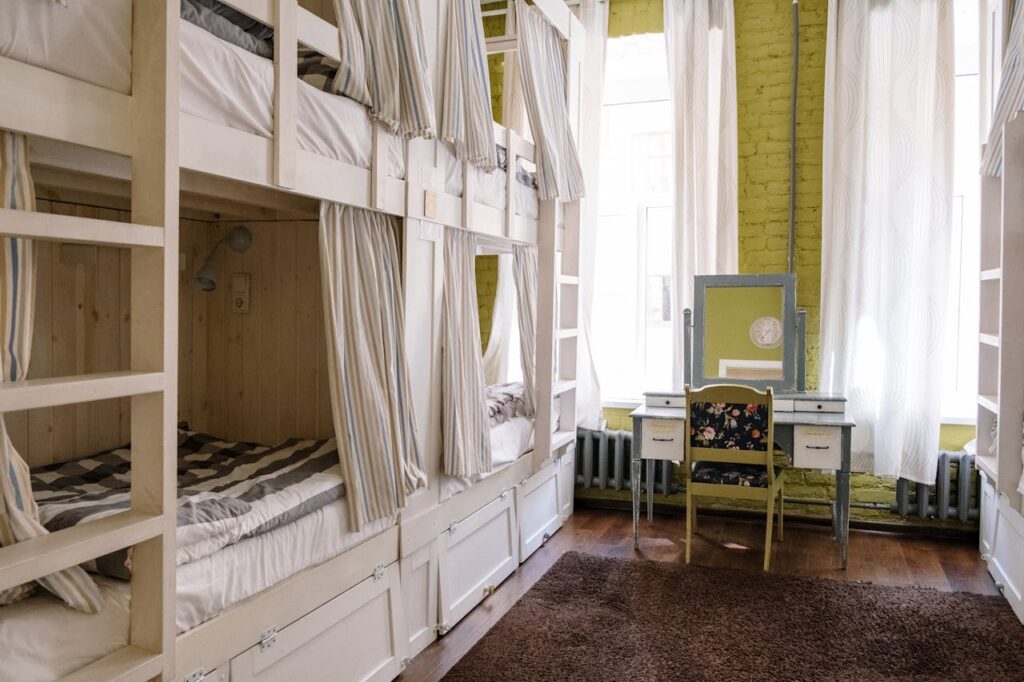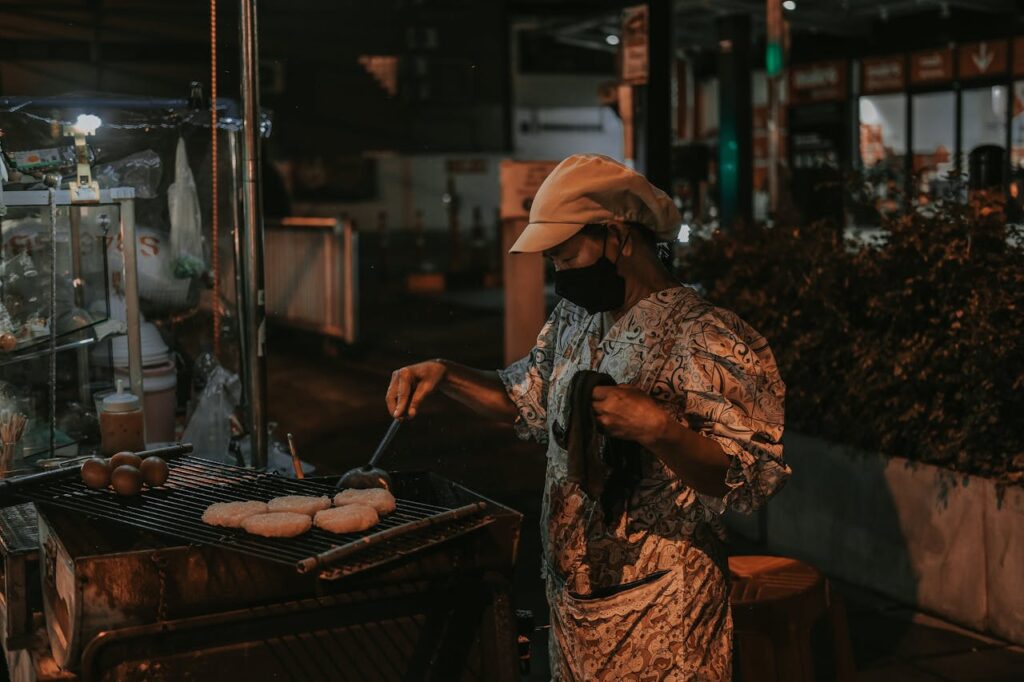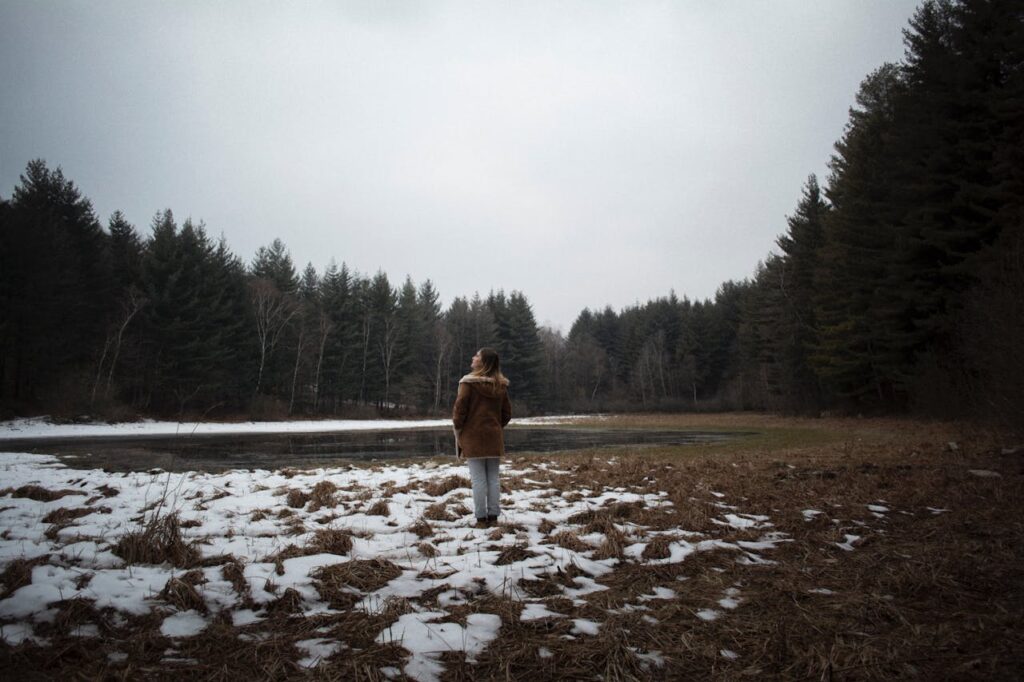The dream of traveling the world doesn’t have to remain a fantasy reserved for trust fund kids and lottery winners. With strategic planning, creative thinking, and smart financial choices, you can explore incredible destinations while actually strengthening your financial foundation rather than destroying it.
This isn’t about backpacking through hostels eating instant noodles for months (though there’s nothing wrong with that). This is about traveling intelligently—maximizing experiences while minimizing financial damage, and in some cases, even coming home with more money than when you left.
The Mindset Shift: From Expense to Investment
Traditional Thinking: Travel is an expensive luxury that requires going into debt or depleting savings.
Strategic Thinking: Travel is an investment in personal growth, career opportunities, and life experiences that can actually enhance your earning potential.
This mindset shift changes everything about how you plan, budget, and execute your travel dreams. When you view travel as an investment rather than an expense, you start looking for ways to make it pay for itself.
The Financial Foundation: Save Smart, Travel Smarter
The Travel Fund Strategy
Step 1: Calculate Your True Travel Costs
Don’t just budget for flights and hotels. Include:
- Transportation (flights, trains, local transit)
- Accommodation (lodging, booking fees, taxes)
- Food and dining (groceries, restaurants, street food)
- Activities and attractions (tours, museums, experiences)
- Miscellaneous (visas, insurance, emergency fund)
- Hidden costs: Wi-Fi fees, baggage charges, currency conversion
“Automate your travel savings alongside your everyday budget using the 50/30/20 Rule Explained to ensure consistent contributions.”
Step 2: The Reverse Budget Method
Instead of asking “How much can I afford to spend?” ask “How amazing can I make this trip for X dollars?”
Example: $3,000 budget for Southeast Asia
- Expensive approach: 2 weeks in luxury hotels and restaurants
- Strategic approach: 6-8 weeks mixing mid-range and budget options, experiencing more destinations and cultures
Step 3: Automate Your Travel Savings

Set up a dedicated travel savings account with automatic transfers:
- Daily coffee money: $5/day = $1,825/year
- Lunch out once weekly: $12/week = $624/year
- One fewer restaurant dinner monthly: $50/month = $600/year
- Total annual travel fund: $3,049
This fund covers a month in Southeast Asia, two weeks in Eastern Europe, or a road trip across the United States.
Accommodation Hacks: Sleep Well, Spend Less
Beyond Hotels: Creative Lodging Solutions
House Sitting (Cost: $0 + utilities)
- Platforms: TrustedHousesitters, Nomador, MindMyHouse
- Benefits: Free accommodation + local neighborhood experience
- Responsibilities: Pet care, plant watering, basic maintenance
- Savings potential: $100-300/night in expensive cities
Home Exchanges (Cost: $0)
- Platforms: HomeExchange, Love Home Swap
- Benefits: Live like a local, full kitchen access, authentic neighborhoods
- Requirements: Own home to exchange
- Best for: Families, longer stays (1+ weeks)
Airbnb Optimization
- Book entire apartments for groups (split costs)
- Choose places with kitchens to save on dining
- Stay slightly outside city centers for better value
- Message hosts directly for discounts on longer stays
Strategic Hostel Use

- Private rooms in hostels vs. budget hotels (often cheaper)
- Kitchen access for meal preparation
- Social atmosphere for meeting travel partners
- Adult-friendly hostels: Many cater to 25+ travelers
“For more creative lodging options year-round, see our guide on Minimalism vs. Consumerism: Which Lifestyle Saves You the Most?.”
Accommodation Cost Comparison (per night):
Prague, Czech Republic:
- Luxury hotel: $200-400
- Mid-range hotel: $80-150
- Airbnb apartment: $40-80
- Hostel private room: $25-45
- House sitting: $0
Savings over 10 nights: $250-4,000 depending on choices
Transportation: Getting There and Around
Flight Optimization Strategies
The Tuesday Myth Debunked
Recent data shows Tuesday bookings aren’t significantly cheaper, but these strategies work:
Flexible Date Searching
- Use Google Flights’ calendar view
- Consider flying midweek vs. weekends
- Compare different months for international travel
- Example: Bangkok flights $200 cheaper in April vs. December
Alternative Airports
- Chicago area: ORD vs. MDW can differ by $300+
- New York: JFK vs. LGA vs. EWR comparison shopping
- London: Heathrow vs. Gatwick vs. Luton price differences
Stopovers as Destinations
- Iceland Air’s free stopovers in Reykjavik
- Turkish Airlines’ Istanbul stopover program
- Strategy: Two destinations for the price of one flight
Budget Airlines Done Right
- Factor in ALL fees before booking
- Pack light to avoid baggage charges
- Bring own food and entertainment
- Hidden gems: Ryanair in Europe, AirAsia in Southeast Asia, Spirit domestically
Ground Transportation Savings
Public Transit Passes
- Eurail passes for multi-country European travel
- JR passes for Japan (buy before arrival)
- City tourist cards combining transit + attractions
- Rule: Calculate break-even point vs. individual tickets
Ride-Sharing Optimization
- Split Uber/Lyft costs with other travelers
- Use local ride-sharing apps (Grab in Asia, Ola in India)
- Book rides during off-peak hours
- Walk/bike short distances instead of riding
Food Strategy: Eat Amazing, Spend Less

The 80/20 Dining Rule
80% Budget Meals:
- Local markets and street food
- Grocery shopping with kitchen access
- Lunch specials instead of dinner prices
- Local workers’ cafes and food courts
20% Splurge Meals:
- One special restaurant per week
- Local delicacies you can’t get at home
- Recommended must-try dining experiences
- Celebration meals for special occasions
“Combine these strategies with our proven meal prep system from How One Family Paid Off $50,000 Debt by Meal Prepping to save even more on food while traveling.”
Country-Specific Food Strategies
Southeast Asia:
- Street food: $1-3 per meal
- Local restaurants: $3-8 per meal
- Western food: $10-20 per meal
- Strategy: Eat local 90% of the time
Europe:
- Grocery shop at discount chains (Lidl, Aldi)
- Lunch menus vs. dinner prices (often 50% less)
- Picnic in parks with fresh market ingredients
- Strategy: Cook breakfast and lunch, dine out for dinner
Latin America:
- Local comedores (workers’ restaurants)
- Market food courts
- Street vendors with high turnover
- Strategy: Follow the locals, avoid tourist areas
Food Budget Breakdown (daily):
Thailand Example:
- Breakfast (coffee + pastry): $2
- Lunch (pad thai from cart): $1.50
- Dinner (local restaurant): $4
- Snacks/drinks: $2.50
- Total daily food cost: $10
Versus Tourist Restaurants: $25-40/day
Activities and Experiences: Maximum Impact, Minimum Cost
Free and Low-Cost Attractions
Every City Offers:
- Free walking tours (tip-based)
- Public parks and gardens
- Free museum days
- Street art and architecture walks
- Local festivals and events
Research Before You Go:
- City tourism websites for free events
- Facebook events in your destination
- Meetup groups for activities
- Reddit city subreddits for local tips
Paid Activities: Smart Choices
City Tourist Cards:
- Compare card cost vs. individual attraction prices
- Factor in transportation inclusion
- Consider time limitations (24/48/72 hours)
- Best value: When visiting 3+ included attractions
Group Tours vs. Independent Exploration:
- Group tours: Better for complex logistics, cultural context
- Independent: Better for flexibility, cost control
- Hybrid approach: Group tour for overview, return independently to favorites
Experience Prioritization Matrix
Must-Do (budget 40% of activity funds):
- Unique-to-destination experiences
- Once-in-a-lifetime opportunities
- Cultural immersion activities
Should-Do (budget 35% of activity funds):
- Highly recommended attractions
- Popular local experiences
- Educational opportunities
Could-Do (budget 25% of activity funds):
- Tourist attractions available elsewhere
- Weather-dependent activities
- Expensive convenience options
Country-Specific Budget Breakdowns
Southeast Asia (30 days, $1,800 total)
Daily Budget: $60
- Accommodation: $15 (mix of hostels and budget hotels)
- Food: $12 (mainly local cuisine)
- Transportation: $8 (local transport, some flights)
- Activities: $15 (tours, attractions, nightlife)
- Miscellaneous: $10 (shopping, emergencies)
Countries: Thailand, Vietnam, Cambodia
Highlights: Angkor Wat, Ha Long Bay, Thai islands
Eastern Europe (21 days, $1,400 total)
Daily Budget: $67
- Accommodation: $25 (Airbnb and hostels)
- Food: $18 (mix of grocery and restaurants)
- Transportation: $12 (trains and buses)
- Activities: $8 (museums, tours)
- Miscellaneous: $4 (souvenirs, coffee)
Countries: Czech Republic, Hungary, Poland
Highlights: Prague, Budapest, Krakow
Central America (28 days, $1,680 total)
Daily Budget: $60
- Accommodation: $18 (hostels and guesthouses)
- Food: $15 (local restaurants and markets)
- Transportation: $10 (buses, some flights)
- Activities: $12 (tours, national parks)
- Miscellaneous: $5 (shopping, tips)
Countries: Guatemala, Belize, Costa Rica
Highlights: Tikal, Caye Caulker, Manuel Antonio
Advanced Money-Saving Strategies
Travel Hacking: Points and Miles
Credit Card Strategy:
- Signup bonuses for travel cards
- Category spending optimization
- Manufactured spending (advanced technique)
- Caution: Only if you pay balances in full
Loyalty Programs:
- Hotel loyalty programs for free nights
- Airline frequent flyer programs
- Coalition programs (Chase Ultimate Rewards)
Slow Travel Economics
The One-Month Rule:
Staying one month in each destination often costs less than one week due to:
- Monthly accommodation discounts
- Reduced transportation costs
- Local pricing discovery
- Efficiency improvements
Example Comparison (Lisbon):
- One week: $150/night average
- One month: $80/night average
- Savings: $490 for longer stay
Seasonal Arbitrage
Shoulder Season Travel:
- 40-60% savings on accommodation
- Better weather than low season
- Fewer crowds than high season
- Best times: April-May, September-October (Europe)
Reverse Seasons:
- Southeast Asia during “rainy season” (brief afternoon showers)
- Central America during “hurricane season” (rarely affects travelers)
- Europe in winter (Christmas markets, lower costs)
Working While Traveling

Digital Nomad Strategies
Location-Independent Income:
- Freelance writing, design, programming
- Online tutoring or consulting
- Virtual assistant services
- Goal: Offset travel costs with remote income
Visa Considerations:
- Tourist visas for leisure travel
- Working holiday visas (under 30 in many countries)
- Digital nomad visas (emerging in many countries)
Short-Term Work Opportunities
Teaching English:
- TEFL certification programs
- Conversation exchange partnerships
- Online English tutoring platforms
Seasonal Work:
- Ski resorts (winter)
- Beach destinations (summer)
- Agricultural harvest work
- Benefits: Free accommodation often included
Insurance and Safety: Protecting Your Investment
Travel Insurance Essentials
Coverage Types:
- Medical emergencies (most important)
- Trip cancellation/interruption
- Baggage loss/delay
- Adventure sports coverage (if applicable)
Cost-Effective Options:
- Annual policies for frequent travelers
- Credit card travel insurance benefits
- Nomad-specific insurance providers
- Typical cost: $5-15/day depending on coverage
Money Safety Strategies
Multiple Access Points:
- Primary debit card (notify bank of travel)
- Backup debit card from different bank
- Credit card for emergencies
- Small amount of cash in local currency
Security Measures:
- Separate cards in different locations
- Digital copies of important documents
- Emergency contact information
- Travel registration with embassy
Coming Home Richer: The ROI of Travel

Career Benefits
Networking Opportunities:
- International business contacts
- Cross-cultural communication skills
- Language learning advantages
- Long-term value: Often exceeds travel costs
Personal Development:
- Problem-solving skills enhancement
- Cultural intelligence development
- Confidence and independence building
- Measurable impact: Better job prospects, salary negotiations
Financial Discipline Benefits
Budget Management Skills:
- Daily expense tracking
- Creative problem-solving
- Value assessment abilities
- Transfer value: Better financial management at home
Perspective on Spending:
- Appreciation for experiences over possessions
- Understanding of global cost differences
- Reduced lifestyle inflation tendency
The 90-Day World Travel Challenge
Ready to prove travel doesn’t have to wreck your savings? Here’s a framework for traveling the world while maintaining financial health:
Phase 1: Planning (30 days before departure)
- Set total budget based on current savings + travel fund
- Research destinations matching budget
- Book major transportation and accommodation
- Obtain necessary visas and insurance
Phase 2: Execution (60 days traveling)
- Track daily expenses against budget
- Adjust plans based on actual costs
- Look for income opportunities if needed
- Document experiences for future content creation
Phase 3: Integration (30 days after return)
- Calculate total costs vs. budget
- Assess career and personal development gains
- Plan next adventure based on lessons learned
- Share experiences to help others
Real Success Stories
Case Study 1: Sarah’s Southeast Asia Adventure
Budget: $2,500 for 6 weeks
Actual cost: $2,200
Countries: Thailand, Vietnam, Cambodia
Key savings: House sitting in Bangkok (saved $800), local food (saved $600)
ROI: Freelance photography skills developed led to $3,000 income boost
Case Study 2: Mike’s European Circuit
Budget: $3,000 for 4 weeks
Actual cost: $2,800
Countries: Czech Republic, Hungary, Poland, Slovakia
Key savings: Rail pass, grocery shopping, free walking tours
ROI: Language skills led to international consulting opportunities
Case Study 3: Lisa’s Central American Journey
Budget: $2,000 for 5 weeks
Actual cost: $1,850
Countries: Guatemala, Belize, Costa Rica
Key savings: Volunteer teaching (free accommodation), local transportation
ROI: Teaching experience led to career change and salary increase
Your Action Plan: From Dream to Departure
Week 1: Foundation Setting
- Calculate travel fund capacity
- Research 3-5 potential destinations
- Open dedicated travel savings account
- Set automatic transfer amount
Week 2: Deep Research
- Compare costs for chosen destinations
- Research visa requirements
- Investigate accommodation options
- Connect with travel communities online
Week 3: Financial Optimization
- Review current expenses for savings opportunities
- Research travel rewards credit cards
- Plan income optimization strategies
- Calculate total budget requirements
Week 4: Commitment and Planning
- Set departure date (gives urgency and motivation)
- Book refundable accommodation for first few nights
- Apply for necessary visas
- Begin language learning if applicable
The Bottom Line: Travel as Financial Strategy
The biggest threat to your savings isn’t your travel dreams—it’s the mindset that travel requires financial sacrifice. When you approach travel strategically:
- You develop better budgeting skills through daily expense management
- You gain career-enhancing experiences that increase earning potential
- You build financial discipline through creative problem-solving
- You expand your worldview in ways that improve financial decision-making
The question isn’t whether you can afford to travel. The question is whether you can afford not to gain the skills, perspective, and experiences that strategic travel provides.
Your world is waiting. Your savings account can come along for the journey.
What’s holding you back from traveling without wrecking your savings? Which destination would you choose for your first strategic travel adventure? Share your travel savings goals in the comments below.
Related Articles
- Step-by-Step Guide: How to Start Saving on a $2,500 Monthly Income
- 9 Life Hacks That Will Save You $200 This Month
- 10 Best Free Budget Tracking Apps in 2025
- Why Cutting Subscriptions May Be Better Than Cutting Lattes
Resources Links
- U.S. Department of State: Smart Traveler Enrollment Program
- World Bank: Global Travel and Tourism Data
- Lonely Planet: Budget Travel Tips





